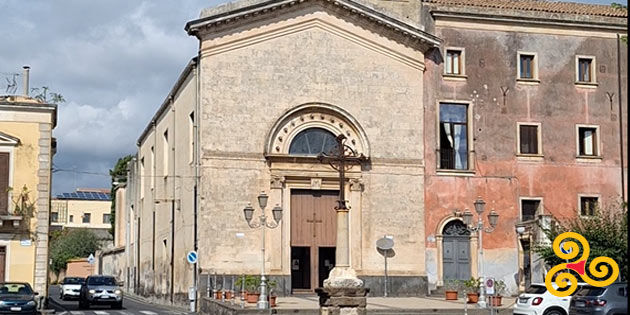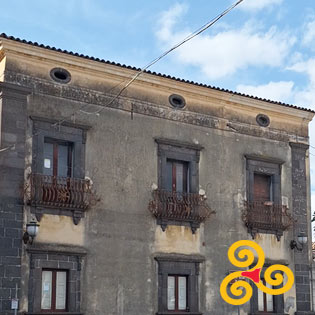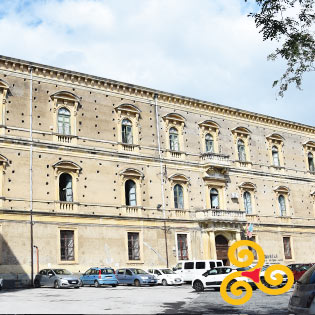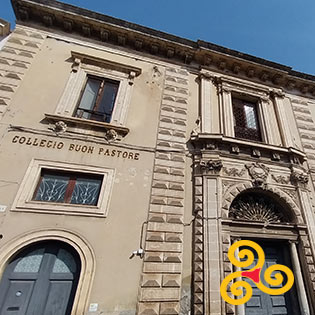Church of San Biagio in Acireale
The Church of San Biagio in Acireale and the adjoining Franciscan convent constitute an important religious complex in the city.
It is known that there was an ancient building of worship, in this same place, built around 1550, entrusted to the Friars Minor in 1611 and destroyed by the earthquake of 1963. The current building has a seventeenth-century layout and was built after the earthquake.
The simple gabled façade dates back at the end of the 19th century and is the work of the architect Mariano Panebianco. It has a single portal flanked by pilasters with Corinthian capitals surmounted by a curved tympanum with a lunette.
The interior, with a single nave, has a vestibule delimited by four Corinthian columns, which support the choir and the organ , and the main altar with baroque features. The seventeenth-century coffered ceiling and the frescoes by the Acese painter Giovanni Lo Coco are valuable.
Among the works kept in the church, of particular value are: some canvases by Alessandro Vasta, son of the more famous Pietro Paolo Vasta, by Baldassarre Grasso and Giacinto Platania; the canvas of the Immaculate Conception, dating back to 1611, the oldest representation of the Immaculate Conception present in Acireale; the silver statue of the Immaculate Conception, sculpted by an unknown follower of the Bernini school from Messina, placed on the main altar; the triptych depicting some scenes from the life of Saint Francis of Assisi, created by Giovanni Lo Coco.
Annexed to the church is the Franciscan convent with cloister. The cloister, square in shape with an arched portico, has the ancient water cistern in the centre. The frescoes depicting scenes from the life of Saint Francis of Assisi and the history of the Franciscan order are valuable.



